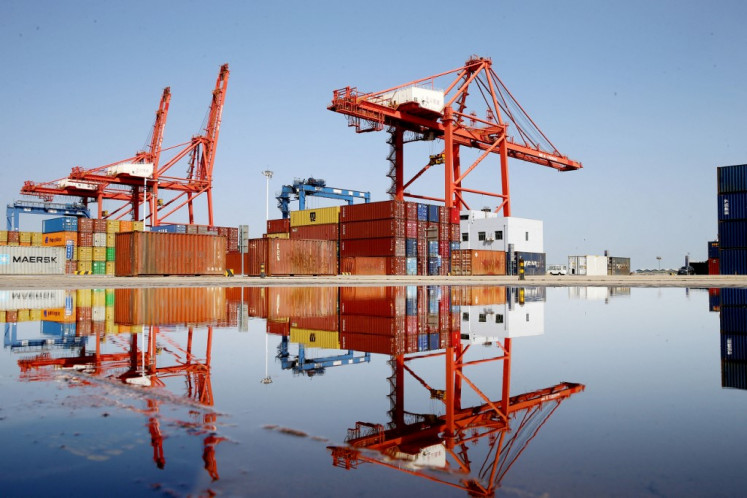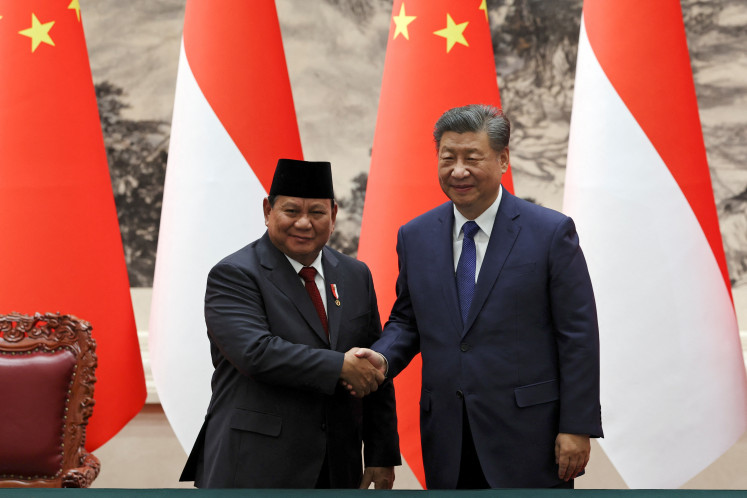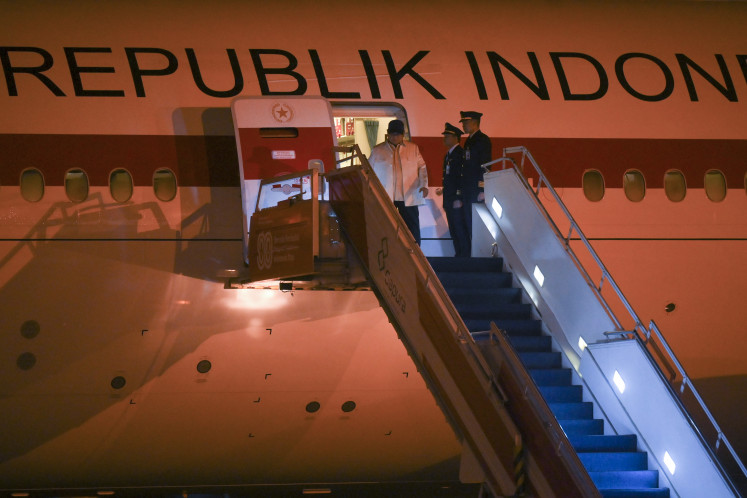Popular Reads
Top Results
Can't find what you're looking for?
View all search resultsPopular Reads
Top Results
Can't find what you're looking for?
View all search resultsChina’s fast-changing economic adjustments
The combination of rising uncertainty and falling confidence is casting a dark shadow over the Chinese economy.
Change text size
Gift Premium Articles
to Anyone
T
he business model that underpinned Chinese economic growth for over two decades has collapsed in recent years, especially since the outbreak of the COVID-19 pandemic. Now, the combination of rising uncertainty and falling confidence is casting a dark shadow over the Chinese economy.
The immediate reasons for the decline of China’s prevailing business model are external. In particular, geopolitical developments, mainly deepening trade frictions, especially with the United States, have rattled China’s export sector. And US president-elect Donald Trump’s incoming administration is set to introduce even higher tariffs on Chinese goods and tighter restrictions on China’s access to foreign technologies.
These external factors alone would be enough to require a profound domestic adjustment in China, including an update of the prevailing business model. But internal developments are even more relevant. After years of excessive investment, infrastructure projects are yielding diminishing returns, and the once-frothy real-estate sector is plagued by large debts, falling prices and a massive stock of unsold units. A more subdued internet economy is not helping matters.
Many of these developments have been a long time coming: As early as 2013, China’s economy was confronting high volatility and soaring financial risk. With too much credit having been pumped into physical infrastructure and real estate, the debt-to-GDP (gross domestic product) ratio soared, and overcapacity plagued a number of industries, including coal mining, steel and cement.
China’s top leaders recognized the need to rein in investment growth and find new sources of productivity, and acknowledged that this might require the country to endure another period of significant structural transformation. In 2015, the government introduced a set of policies aimed at accelerating supply-side adjustments, promoting structural transformation (not least through the adoption of digital technologies), and encouraging investment in cutting-edge industries, such as microelectronics, artificial intelligence, biopharmaceuticals, solar panels, lithium batteries and electric vehicles (EVs). Many sectors, including real estate, manufacturing and services have since undergone significant adjustments, resulting in a painful period of “L-shaped” growth.
But the necessary transformation is far from complete, and economic conditions are changing fast. As Chinese exporters confront high levels of uncertainty regarding the external environment, domestic policy adjustments have plunged the real-estate and construction sectors into debt distress.
To mitigate the risks, firms are increasingly embracing digital technologies, with a growing amount of capital flowing toward AI. More firms should follow this path. Digital penetration fuels dynamic competition, with startups rising quickly to challenge, and destroy, the incumbents who fail to keep up. But while new “tracks” continue to emerge, particularly in advanced industries, they will soon become overcrowded.



















